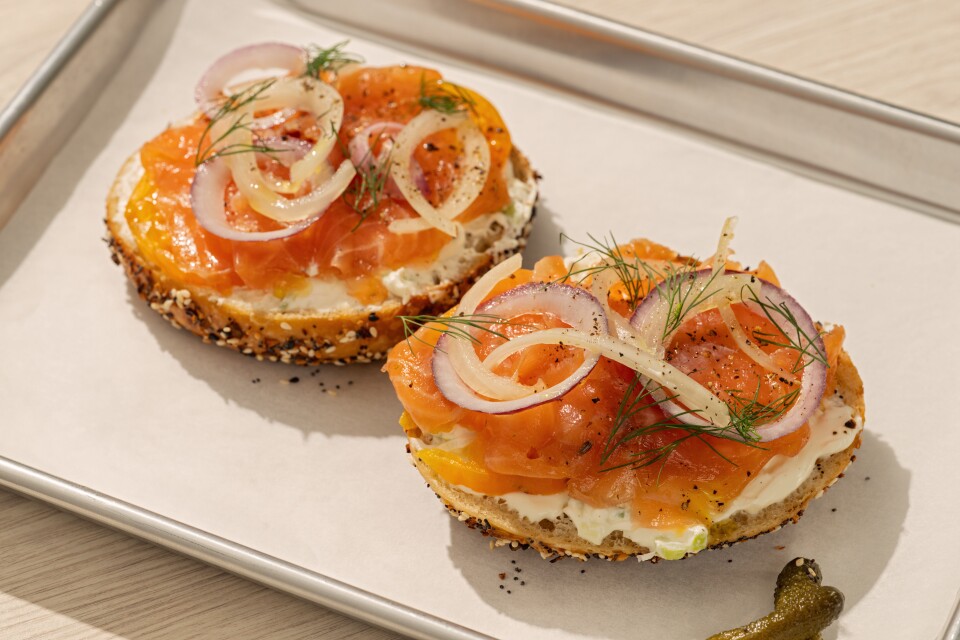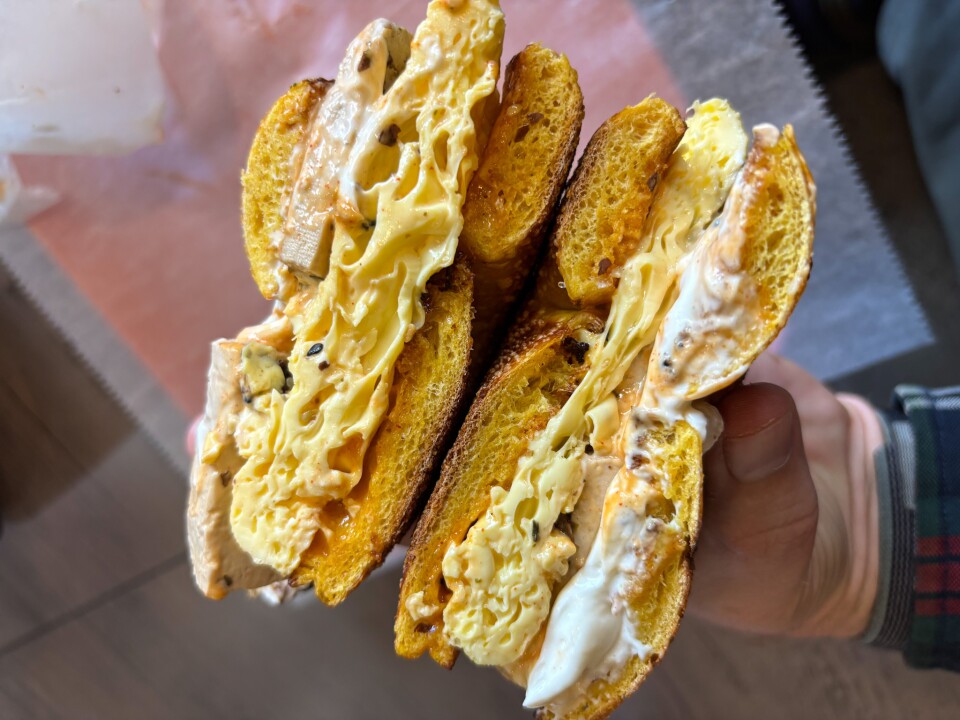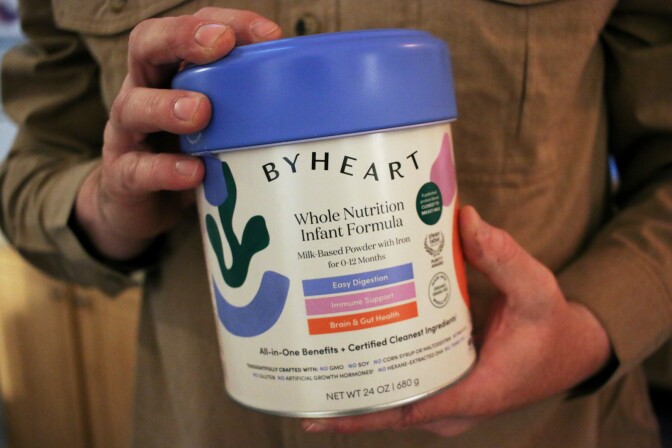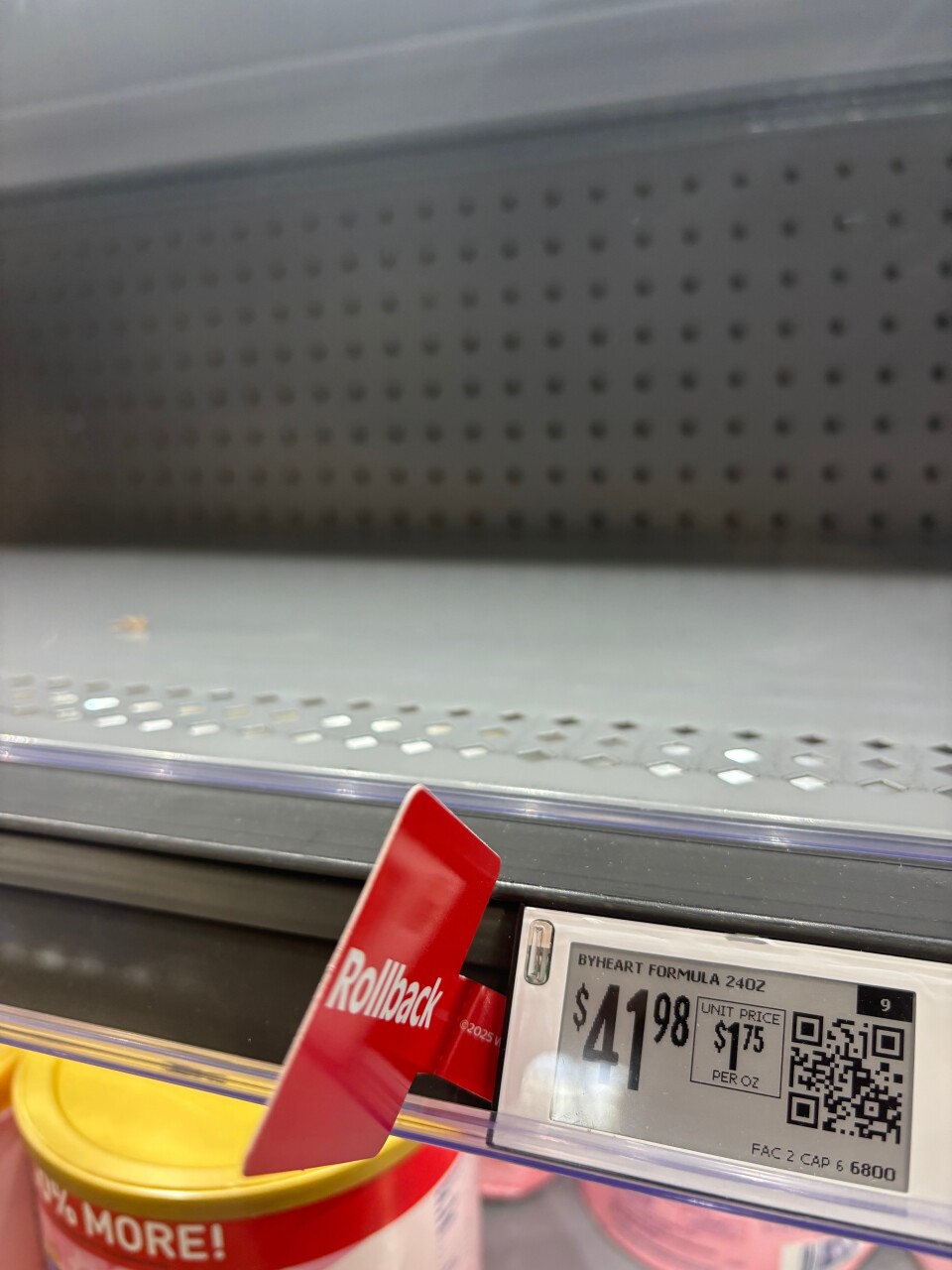At first light on a Wednesday morning, a small group of people gather in the parking lot of a South Central laundromat. Some clutch walkie-talkies. Others sip paper cups of coffee, steam rising into the crisp air.
A megaphone bounces at the waist of Ron Gochez.
“You guys have your radio, right?” he asks.
Lupe Carrasco Cardona nods. “We’re going to do Maple? To Jefferson?” she asks, scanning the horizon eager to map out the unit’s route.
The team is preparing for a shift spent scouting the streets for signs of suspicious activity. They’re not security guards, law enforcement or even the neighborhood watch.
Carrasco and Gochez, both educators in the L.A. area and activists with Unión del Barrio, are part of a volunteer network of residents patrolling the streets of Southern California – from South Central to the Eastside. Their mission is simple yet critical: to warn communities of any potential U.S. Immigration and Customs Enforcement (ICE) activity, offering a line of defense for families at risk of deportation. They’re out in the streets to remind their neighbors they have their back as President Donald Trump has pledged to deport “millions and millions” of immigrants.
These patrols are happening amid news that a “large scale” immigration enforcement action was coming to L.A. before the end of February. The Los Angeles Times cited leaked government documents showing that the ICE operation would focus on people who are not legally authorized to be in the country.
“Los Angeles will fight back!” Gochez said at a recent demonstration. “We are looking for the migra, and when we find them, we expose them.”
History of community patrolling
Unión del Barrio, a pro-immigrant political organization, formed their community patrols program in San Diego in 1992, at a time when Border Patrol agents and Immigration and Naturalization Service officers were linked to human and civil rights violations in San Diego and other border cities.
Gochez said the community patrols program draws inspiration from the Black Panther Party, a revolutionary organization with armed self-defense that monitored police activity and documented arrests.
But this group of community patrol volunteers isn’t armed and they don’t confront ICE agents.
Volunteers are trained to identify undercover vehicles used by ICE, which are typically Ford Explorers, Dodge Durangos, and Chevy Impalas, according to the organization. When they spot signs of ICE during their watch, they alert residents – typically through a megaphone.
The Department of Homeland Security did not return a request for comment about the patrols from Boyle Heights Beat. ICE is a federal law enforcement agency within the DHS.
At a recent patrol in San Diego’s City Heights, volunteers tailed a blue Ford Explorer that they linked to ICE, along with two other vehicles in the residential neighborhood. Then through a megaphone, a woman volunteer shouted: “Comunidad, estamos declarando que esta ICE. Aquí hay presencia de ICE!” (“Community, we’re declaring that ICE is here!”)
Carrasco Cardona said their community self-defense “is about going in there, spotting them, and letting people know, ‘Don’t open your doors. Remember your rights.’ We’re not actually physically going to do anything to the agent.”
“We’re reminding them right there in the moment when it’s scary, to not let their rights be infringed upon,” she said.
They target neighborhoods where verified ICE sightings have been reported. So far in L.A., volunteers like Carrasco Cardona have largely patrolled the South Central area.
A patrol network grows on the Eastside
More of these kinds of patrols are expected across L.A. and Southern California with the recent launch of the Community Self-Defense Coalition, a network of 60 Latino, Black, Filipino and Jewish organizations that are banding together to protect immigrants from being swept up in raids conducted by ICE.
Unión del Barrio, which is part of the coalition, has begun community patrol training for members of the coalition, which represents a wide section of the city. A training in Riverside is already earmarked for March. The aim is to create a map where each organization will have a boundary to patrol, Carrasco Cardona said.
One of the coalition members, Centro CSO, is a group dedicated to social justice, police reform, and political engagement in Eastside communities. They’ve helped organize marches and held “Know Your Rights” workshops to keep residents informed.
They’ve also conducted their own foot patrols around East L.A. and Boyle Heights.
On a recent night, volunteers met near Cesar Chavez and Rowan avenues, an intersection where the group’s members said ICE agents were reportedly spotted twice that week.
In a video posted on social media, Jordan Peña and a fellow Centro CSO member walk around the intersection in the evening, saying they were “talking to people and handing out “Know Your Rights” cards.
Peña explains that volunteers make themselves known with megaphones, cameras and a visible presence. When alerted to ICE activity, they documented it with photos, videos and live streams on social media.
“There’s already a lot of fear in the community,” Peña said. “Having undocumented folks know that there are people out there in the community looking out for them…it’s important that [they] see us patrolling, see us walking down.”
Peña added that they plan to train more volunteers to walk the neighborhood regularly and that he’s already seen more people interested in participating.
“It’s nice to see that there are a lot of people right now that are looking to get involved and get organized and be part of the Community Self-Defense Coalition and essentially protect our community,” he said.
A rapid-response team in action
Almost every morning, often before her full-time job as an educator for L.A. Unified, Carrasco Cardona and her husband drive alongside three to four other vehicles, zig-zagging through South Central streets.
Before volunteers begin their patrols, they place a rectangular magnet on the sides of their car, indicating the logo and mission of the group they represent: “Protegiendo a la comunidad del terror de ICE y la policia.”
As she sees people walking to work, waiting at the bus stop or moving trash cans along their block, Carrasco Cardona lowers the car’s window and greets people in Spanish. When she says she’s working to inform people of ICE sightings and hands them “Know Your Rights” cards, their faces light up with gratitude, she says.
On the recent Wednesday morning patrol, an SUV with tinted windows and a grill guard set off alarms for Carrasco Cardona and her husband. After circling the block a few times, they gave the cross streets to the rest of the team and volunteers patrolling swarmed the car. With a megaphone in hand, one went live on Instagram as he approached the car. The SUV turned out to be a former unmarked law enforcement car with no ICE agents nearby.
While the work may seem risky, Carrasco Cardona says the basis of ethnic studies she teaches can be utilized in the communities in which she lives and works.
“You’re not supposed to keep [ethnic studies] in the classroom. You’re supposed to take it out into the community and create transformative and positive change,” Carrasco Cardona said.
Although Los Angeles officially declared its sanctuary city status in December, Trump recently pushed for immigration enforcement agents to access sensitive locations like churches and schools to make arrests.
At school, Carrasco Cardona sees how fearful her students are of being separated from their parents. “They’re going through mental health issues,” she said.
“I think that’s what gets me up in the morning, remembering that some families could be separated. Obviously, we cannot do everything. But, if there is even one family or several families that we can keep together, and all it’s going to cost us is waking up a little bit early – we’re going to do it,” Carrasco Cardona said.














